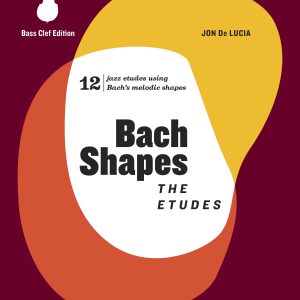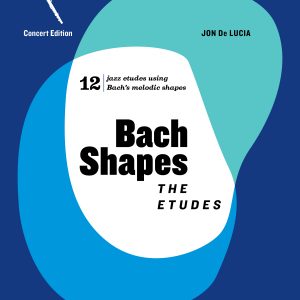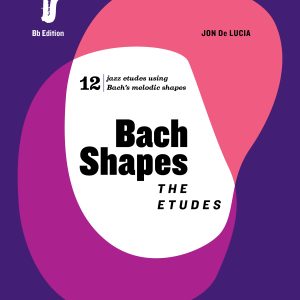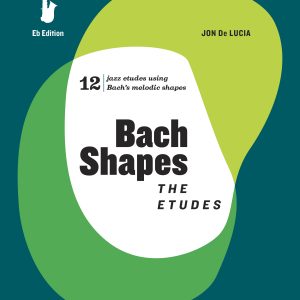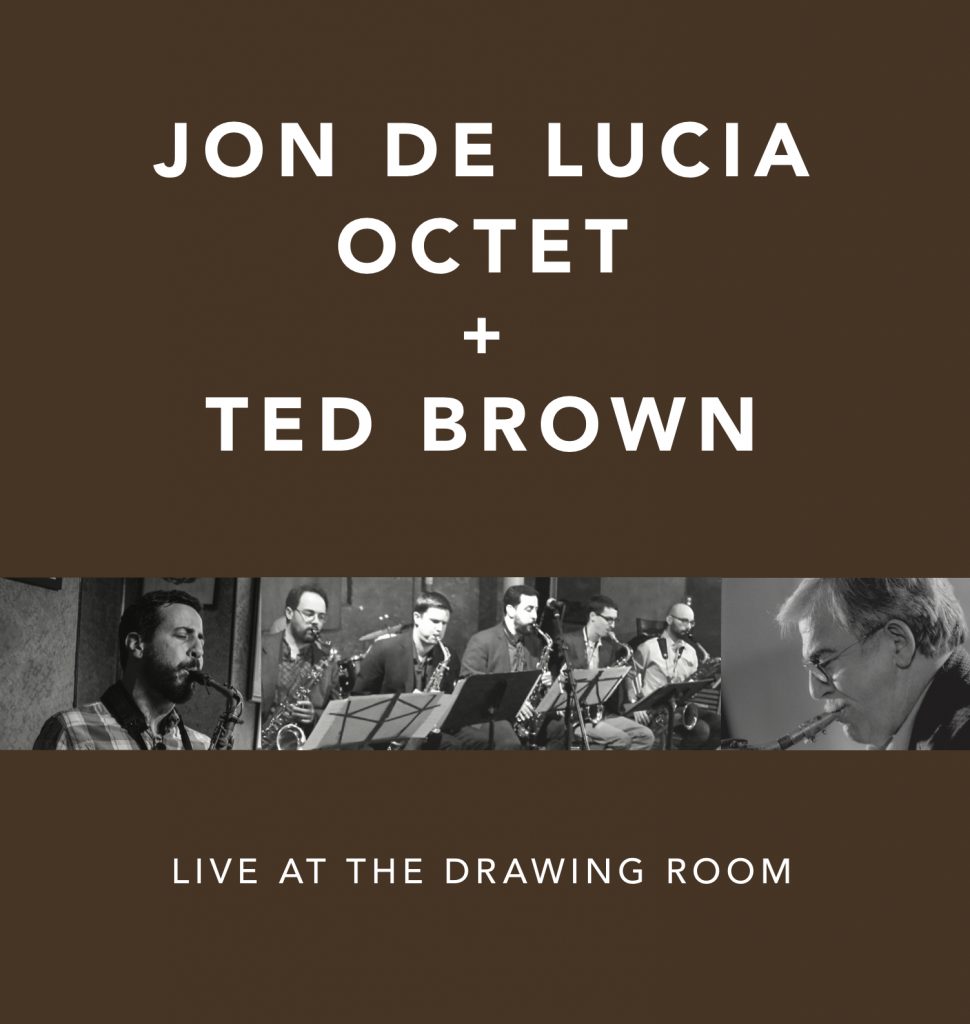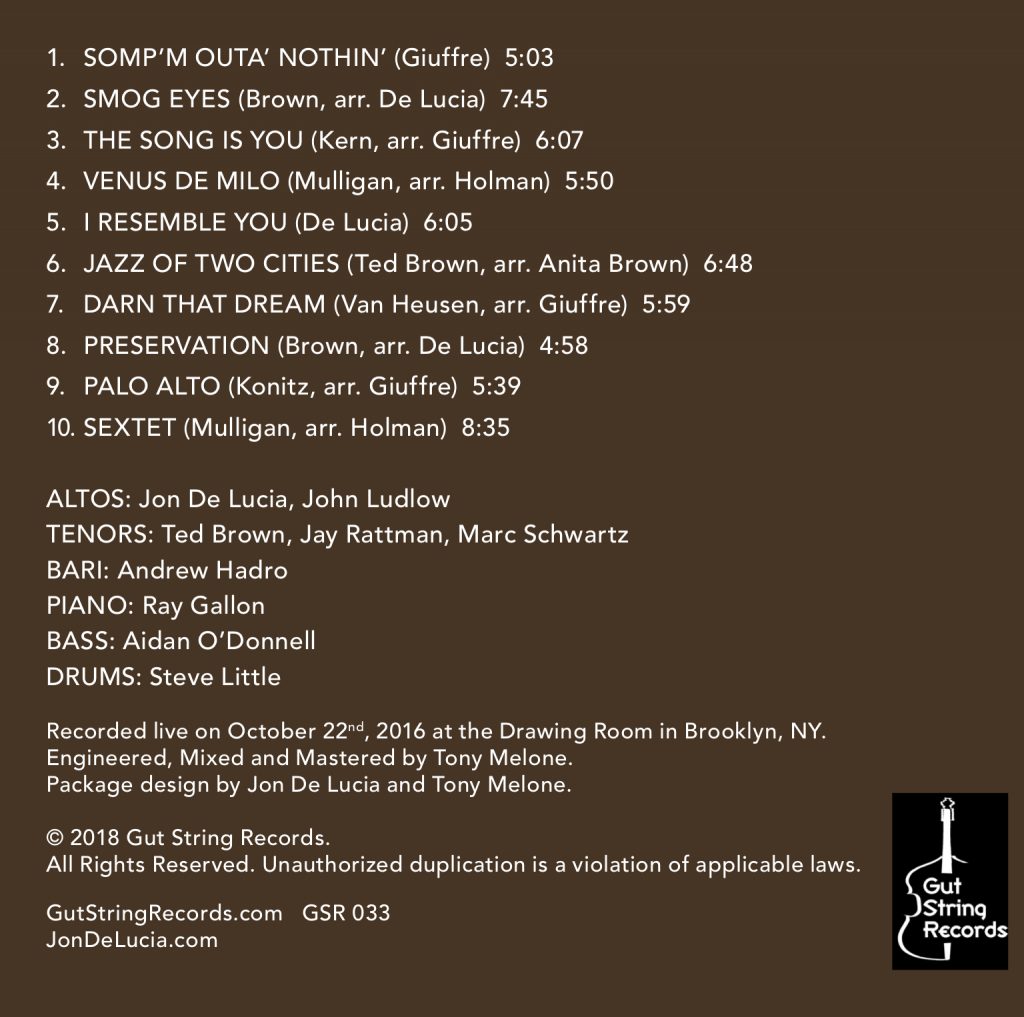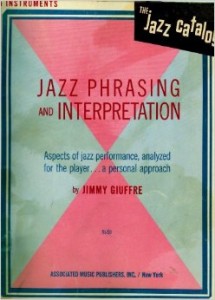Here is a clip from the workshop a few weeks ago, Jazz Workshop II, where we broke down and analyzed one of the etudes from the new books, “Going Bach Home,” based on “Indiana.” Here I go line by line explaining how I applied some Bachian concepts and specific Bach Shapes to the tune. Check it out, I’ll post a clip from Jazz Workshop III soon!
Tag: swing
Youtube Duo with Josh Dunn
Josh and I thought we would try an Intercontinental Duo session. He is sequestered in Tasmania and I’m in Brooklyn, and we decided to play Ellington’s “What Am I Here For?” Enjoy!
New Release from the Jon De Lucia Octet with Ted Brown

Well it’s finally time to release 10 tracks from the concert at the Drawing Room in Brooklyn we did with the great Ted Brown. The Jon De Lucia Octet recorded this, their first concert, in the fall of 2016. We’ve played a lot of music since then, but this one was special. You can read the notes below, and order the CD here at jondelucia.com, or on CD Baby, Amazon, iTunes.
“Some jazz listeners disdain “West Coast jazz, “cool jazz,” or any music in the neighborhood of Lennie Tristano (not just East 32nd Street) as so cerebral that it’s barely defrosted. Jon De Lucia’s Octet shows how wrong that perception is: this music is warm, witty, embracing, not Rubik’s Cube scored for saxophones. Rather, the playful, tender spirit of Lester Young dances through everyone’s heart. This impassioned group swings, even when the players are intently looking at the score. For this gig, the Octet had a great spiritual asset in the gently fervent playing of Ted Brown, a Sage of melodic invention. Also, this session was recorded at one of New York City’s now-lost shrines, Michael Kanan and Stephanie Greig’s “The Drawing Room,” a sacred home for all kinds of music. I am grateful that Jon De Lucia has created this group: so delightful in whatever they play. You’ll hear it too. “
– Michael Steinman, jazzlives.wordpress.com
Liner Notes:
Saxophonist Jon De Lucia met the great tenorist Ted Brown in 2014, and got to play with him soon after. He was and is struck by the pure lyricism and honesty in his improvising. One of the original students of forward thinking pianist Lennie Tristano in the 1940s, Brown, along with Lee Konitz, is among the last of this great school of players. Later, when De Lucia discovered some of Jimmy Giuffre’s original scores from the Lee Konitz meets Jimmy Giuffre session of 1959, which Brown and Konitz both participated in, he knew he wanted to put a band together to play this music with Ted.
Thus the Jon De Lucia Octet was formed. A Five Saxophone and Rhythm lineup with unique arrangements by the great clarinetist/saxophonist Jimmy Giuffre. The original charts featured Lee Konitz on every track, and the first step in 2016 was to put a session together reuniting Brown and Konitz on these tunes. An open rehearsal was held at the City College of New York, Lee took the lead and played beautifully while Ted took over the late Warne Marsh’s part. This then led to the concert you have here before you.
De Lucia steps into Lee’s shoes, while the features have been reworked to focus on Brown, including new arrangements of his tunes by De Lucia and daughter Anita Brown. The rest of the band includes a formidable set of young saxophonists, including John Ludlow, who incidentally was a protege of the late Hal McCusick, who also played on the original recording session of Lee Konitz meets Jimmy Giuffre, and plays the alto saxophone, now inherited, used in the session. Jay Rattman and Marc Schwartz round out the tenors, and Andrew Hadro, who can be heard to great effect on Venus De Milo, plays the baritone. In the rhythm section, Ray Gallon, one of NYC’s most swinging veterans on the piano, Aidan O’Donnell on the bass and the other legend in the room, the great Steve Little on the drums. Little was in Duke Ellington’s band in 1968, recording on the now classic Strayhorn tribute …and His Mother Called Him Bill, before going on to record all of the original Sesame Street music and much more as a studio musician.
The show was sold out at Brooklyn’s now defunct Drawing Room, operated by Michael Kanan and Stephanie Grieg. Along with the music previously mentioned, De Lucia had recently acquired some of the original parts from Gerry Mulligan’s Songbook session, which featured Konitz, Al Cohn, Zoot Sims and Allen Eager in another great sax section recording, this time arranged by Bill Holman. Here the band plays “Sextet,” and “Venus De Milo” from that session. Brown, here making the band a Nonet, plays beautifully and takes part in every tune, reading parts even when not soloing. Not included in this CD is an extended take of Konitz’s “Cork n’ Bib” and Giuffre’s piece for three clarinets, “Sheepherders.” Possible bonus releases down the line!
Since this concert, the Octet has taken on a life of its own, covering the repertoire of the original Dave Brubeck Octet, more of the Mulligan material, Alec Wilder, and increasingly De Lucia’s own material. De Lucia continues searching for rare and underperformed material, rehearsing regularly in NYC and performing less regularly. One can hope there is much more to come from this talented group!
Preview tracks on CD Baby or Gut String Records!
Videos from the Jon De Lucia Octet at City College

Michael Steinman was kind enough to record our recent recital of the Jon De Lucia Octet at the City College of New York. A few of my original arrangements along with Bill Holman and Dave Van Kriedt’s!
Name Brand Method Books, Part 1
I’ve wondered recently why the method books put out by some of the biggest names in jazz never seem to be used anymore and many have gone out of print. I’ve made an effort to unearth some of them, to augment my teaching and to gain insights into what players coming up in the 40’s-60’s were practicing out of.
The book that started my search was the now out of print Jazz Phrasing and Interpretation, by the late great Jimmy Giuffre.
Currently available for the low low price of $75 (for a 60 page book) on Amazon, I had to make a request at the New York Performing Arts Library to be allowed to view this book. After they called my number and handed me the book I was then allowed to take cell phone pictures of each page, but no photocopies. (I ended up taking a photo of every page and creating a pdf if anyone is interested). The book has some interesting exercises, aimed at teaching a class, or individual, jazz phrasing, swing feel and various embellishments. It’s also full of such wisdom as this:
2. The Flowing Beat – Stand back. Take in the music as a whole, in terms of the over-all movement: sing it…feel it…relax your mind and body. Feel the time as it rolls by — nothing else… There should be a dance in the music.
Now, when you begin to play, keep this calmness and lack of tension – but don’t lose hold of your own strength and intensity. From that inner power plat let a constant supply of energy flow through your whole being, effortlessly… music from the core of your body, not its surface!
Just typing this makes me want to spend more time with this book, I’ve only scratched the surface. I don’t know how books like this fall out of print when the market is flooded with other books on how to play jazz but my advice is to seek these books out. They are a great way to learn about a specific players methods and views. Here’s an excerpt from the conclusion of Giuffre’s book:
What hits me is that when the jazz player picks up his horn or sits down at his instrument it is just a continuation of his living. There’s no separation…and I believe that comes through to the audience.
Jazz sounds like it’s being lived.
Just for fun I recorded one piece from the book. Crazy notes, but it works! Here’s Exercise 14 D:
I think I’ll make this a series. Next week, I’ll cover the Benny Goodman book, followed by Jimmy Dorsey, and Artie Shaw. Obviously I have a wind player bias, but please share any other exceptional books you’ve found helpful by well known jazz players.
